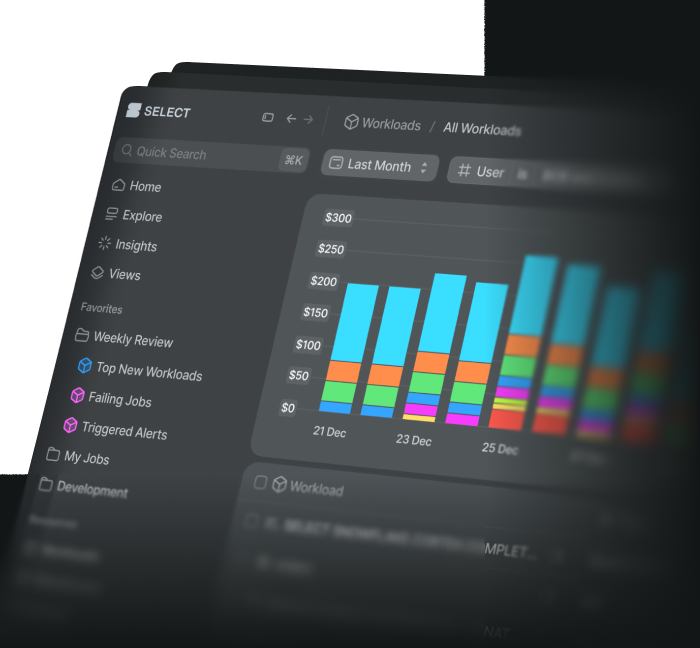Usage Groups are a flexible way to allocate costs in SELECT. With Usage Groups, you can flexibly allocate cost to teams, departments, project, or any bucket of your choice using a variety of Snowflake attributes such as User, Role, Warehouse, Object Tags, Database, or other query metadata.
Usage Group Sets vs. Usage Groups
Usage Group Sets are collections of Usage Groups. For example, we can create a Usage Group Set called “Team” and the individual Usage Groups can be “Finance”, “Accounting”, “HR”, etc. Other common examples of Usage Group Sets include “Department”, “Cost Center”, “Customer” or “Product”.
Creating Usage Group Sets
Before creating any Usage Groups, you need to first create a new Usage Group Set.
In the region above the chart, click “Usage Group Set”, then “Manage Sets”. Add a new name, then click “Done” and “Save”.
This gif demonstrates creating a new Usage Group Set. If you have not created one before, your page will look a little different, but the overall steps are similar.
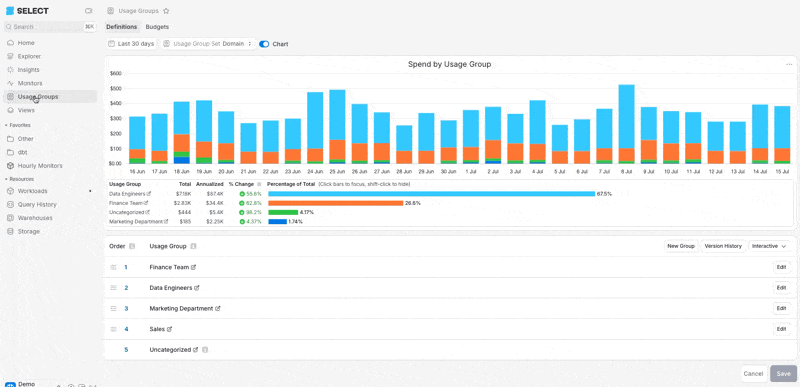
Allocate Using dbt Metadata
Let’s say we want to attribute every dbt model and test executed in our environment to a specific business owners. The first step would be to follow our docs on leveraging dbt meta fields. Once the meta fields are set up in your dbt project, we are ready to create a Usage Group Set and Usage Groups.
Create the Set as shown above, then let’s create the Usage Groups. In this example we’ll create one Group for each Business Owner found in the dbt Meta, as shown here:
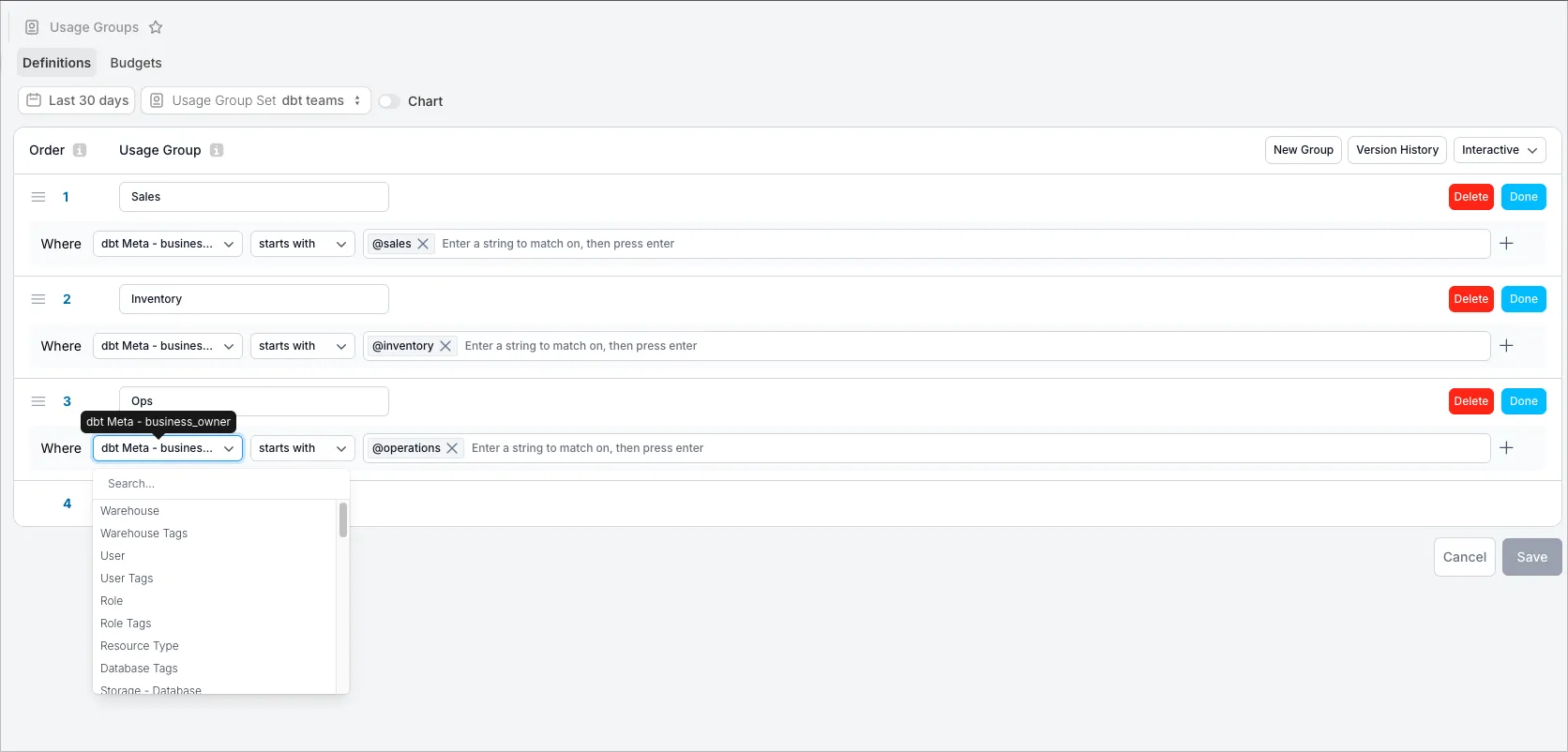
After the Usage Groups are created, visit the Workloads → dbt page, and change the “Group By” dimension on the chart to “Usage Group Set - dbt team”. Now the chart clearly shows which business owner is spending the most in Snowflake!
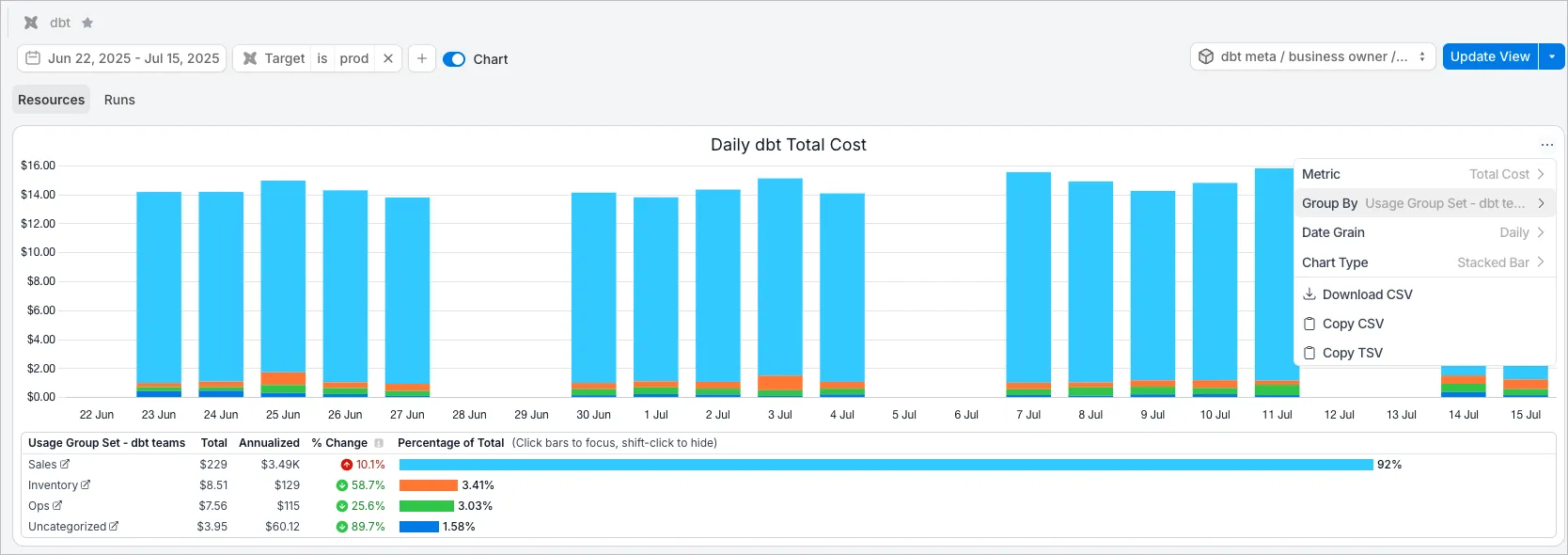
In the table below, I can add a column for “Usage Group Set > dbt teams” to show each model along side the team name.

Allocating Costs Using Snowflake Objects
One of the most popular ways of attributing cost is by using Snowflake Objects such as Warehouse, User, and Role for Compute and Database / Schema for Storage. In SELECT you can easily create usage groups based on any Snowflake Object.
Here’s an example of using several Snowflake Objects allocate cost to departments.
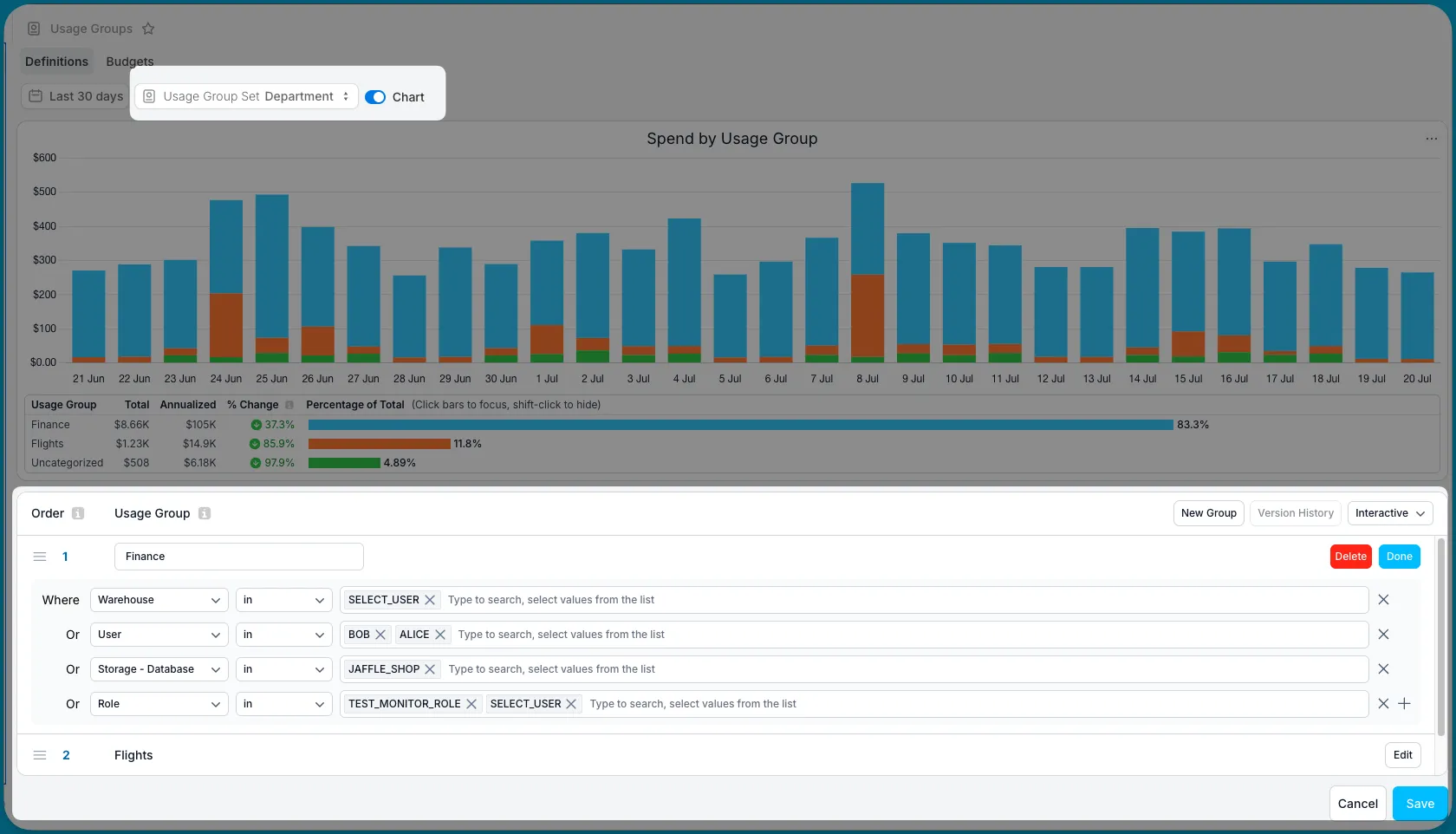
Allocating Costs Using Snowflake Object Tags
Another popular way of attributing costs is by Snowflake Object Tags. Assuming you have configured object tags in your account, search for the word “tag” in the Usage Group configuration where dropdown search. Here you can see that we can report on Warehouse, User, Role, or Database Tags.
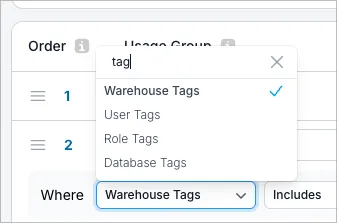
All other aspects of creating the usage group remains the same.
Allocate Spend Using Other SELECT Workloads
Custom Workloads / Query Tag Metadata
If you’re not using dbt, you may want to allocate specific workloads by Query Tag or Query Comments using our Custom Workloads feature. Once you’ve configured the Custom Workloads, you can find them in the Usage Group configuration by typing the word “custom” in the where dropdown search.
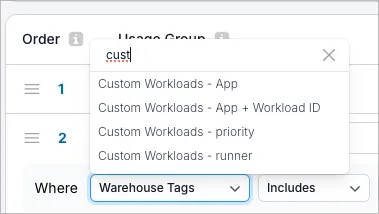
Other Supported Workloads
You can also allocated spend to a Usage Group based on Tasks, Snowpipe, Dynamic Tables, Stored Procedures, Serverless Tasks, Looker User, Hex User, etc.
Reviewing Uncategorized Spend
In the chart screenshot above, you can see we have a small amount of uncategorized spend in our “dbt team” Usage Group Set, which means some model or test is missing the meta tag. Let’s isolate the problem by filtering to the "Uncategorized" data:
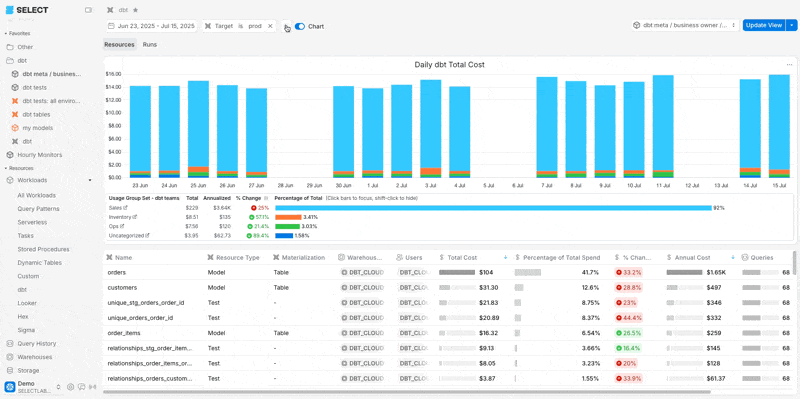
After getting the list of dbt assets that are missing the “business_owner” Meta in dbt, I update my dbt project to include the meta for those assets, then update the usage groups in SELECT. Don’t forget to create a Saved View and add a favorite to track uncategorized spend! The best practice is to make a habit of reviewing and eliminating uncategorized spend in Usage Groups.
Other Callouts with Usage Groups
There are a few things to keep in mind and explore about Usage Groups:
- As seen in the demonstration above, Usage Groups can be added to the “group by” of any chart in SELECT or as a column in any table.
- It is easy to monitor spend by Usage Groups by creating Monitors for each Usage Group Set.
- Usage Groups can also be used for Role Based Access Control, as demonstrated in this usage guide.
- For simpler ongoing management and version control, Usage Groups can be created and managed via Terraform or through our Usage Groups API.



